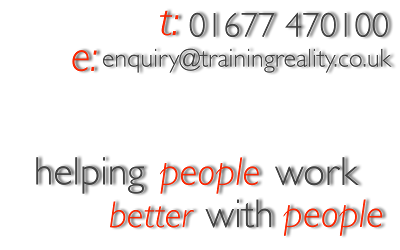Please press (at least!) one of these.
It costs you nothing, and (possibly) helps us spread the word!
What happens when people don't fit?
Thursday, 21 June 2012
Sometimes, things just don't fit. And sometimes, people don't fit either. Whilst it may be possible to get square pegs into round holes, the sheer force that needs to be applied to do so is so great that both the organisation, and the people involved can be irreparably damaged.
As a people-focused training company, our mantra (crafted after a lot of work and many cups of coffee!) is that we help people work better with people. We strive to understand individuals, how they relate to one another and to their organisation, and how, through personal growth and development, these relationships can be improved. This is a vast and complex area - because it involves people - but also a rich, varied and extremely rewarding one.
However, one of the toughest situations we come across, fortunately infrequently, is when an individual simply does not fit. The initial response, from trainers and coaches, as well as from the more enlightened leaders in organisations, is to try, hard, to facilitate change. That might be soft change, when the individual works to develop their capabilities, or it could be hard change, with changes to the organisational structure, teams, systems or processes.
Making a judgement about the relative costs of these changes versus the cost of the individual moving on is a tough call. In the short and the medium term, if the decision is made to release the individual (or the individual decides to leave), it can be traumatic for the people involved. Feelings of rejection, failure (on both "sides"), or of being an outcast, can become overwhelming. But there is an upside.
Making the decision to stop hammering the square peg, or carving out the round hole, can be a very liberating experience, if it is handled well. Over the last few years, we've been involved in a small handful of direct cases where this has been done, and, without trivialising the inevitable impact that such dramatic change has, the ultimate longer-term result has been hugely rewarding. People can move on, to bigger and better things, and, more importantly, more comfortable things - they can find their own "square hole" into which they fit far more easily.
There are a number of important lessons for trainers, coaches, mentors and managers that come directly from these experiences:
Not everything is fixable
Going into things with a positive, optimistic outlook is great. But that doesn't mean that everything is possible, or even worth the effort. However much we want to work at something, to achieve something, sometimes it's better not to.
Comfort is important
Constant change, constant improvement, constant development; these can all be great, challenging, exciting. But for some people (perhaps all people, some of the time), comfort is not only desirable, but needed. Fighting all the time to fit in might be too draining.
Being a different shape is, simply, different
Not fitting into a round hole is not a bad thing. It doesn't mean you're wrong; it doesn't mean your awkward or difficult. It simply means that you're a different shape - and we are all different shapes.
Tough decisions need decisiveness
At times like these, we need to apply the same level of rigour to being decisive about someone leaving an organisation as we would to helping the grow, develop and stay. There are always more things that we could do - there is no limit to the possibilities for change - but we do need to know (and be prepared to) draw the line somewhere.
--
We'd love to hear your direct experiences of this type and level of personal change. Please use the comment section below.
Please press (at least!) one of these.
It costs you nothing, and (possibly) helps us spread the word!





